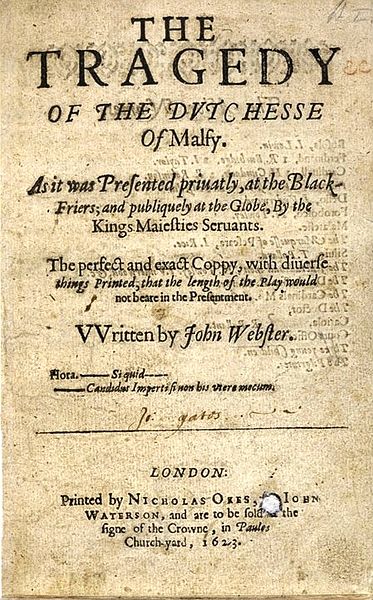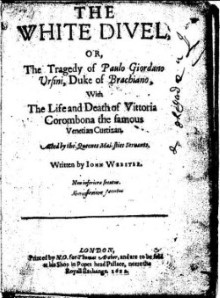
Webster, John
As with most playwrights of the early modern period, little is categorically known about John Webster’s life. However, the following biography is constructed from the written sources which give clues about his life, and follows what is generally agreed by critics and historians.
John Webster’s exact date of birth is unknown, although it is thought he was born in either 1578 or 1579, which places him as approximately 15 years younger than his contemporary,
This is not the case, however, for his work as a playwright. Indeed, there is a much clearer record of his work life than there is of his life at home. In the early 1600s, Webster produced a number of plays in collaboration with other writers of the time, and it is these which make up the majority of his work overall. In fact, it is thought that Webster produced only four plays of his own, one of which (if it ever actually existed) has been lost. Writers that Webster is known to have worked with include prominent playwrights of the period, such as Thomas Dekker, William Rowley, John Ford, and Thomas Middleton, with Thomas Heywood and John Fletcher also being suggested as producing works to which Webster contributed. There then appears to be a break in his work around the time of his marriage, before he reappears a few years later, but this time with a play of his own.
The White Devil, first performed in 1612 and thought to have been written around three years earlier, is one of Webster’s most successful plays, second only to The Duchess of Malfi. Webster began his work on The Duchess of Malfi in the same year as The White Devil made its first performance, although it was not published until 1623. Alongside it, Webster’s final single-authored play, The Devil’s Law Case (written in 1616), was published.
John Webster’s dramatic, and other written, output was relatively small, especially when compared with other writers in the same period. For instance Shakespeare wrote 37 plays, 154 sonnets and five long narrative poems. The limited output of Webster might suggest that he had other, independent means of income. Webster was not formally attached to a company as was Shakespeare, nor was he a freelance writer regularly offering his plays to all companies, like
In 1638, a John Webster is recorded as having been buried in St James’s, Clerkenwell, but Thomas Heywood’s The Hierarchy of the Blessed Angels seems to suggest that John Webster the playwright may already have been dead by 1634.
© ZigZag Education 2026: content may be used by students for educational use if this page is referenced.
Show / hide details
| Around 1580 |
John Webster, playwright, born
|
|
| Around 1597 |
Seems to have been a Law student at Middle Temple
|
|
| 1602 |
The first definite written reference to John Webster
|
|
| 1603 |
Death of Elizabeth I
|
|
| 1604 |
Webster contributed to John Marston’s tragicomedy The Malcontent
|
|
| 1605 |
Collaborated again with Thomas Dekker
|
|
| 1606 |
Webster and his wife, Sara, started a family
|
|
| 1612 |
Publication of The White Devil
|
|
| 1613 |
The first performance of The Duchess of Malfi probably occurred
|
|
| 1617 |
Webster’s father died
|
|
| 1617 |
Collaborated with others towards the Lord Mayor’s Pageant and a popular, topical tragedy
|
|
| 1634 |
John Webster may already have been dead
|
|
| 1638 |
A John Webster was buried in St James’s, Clerkenwell
|






